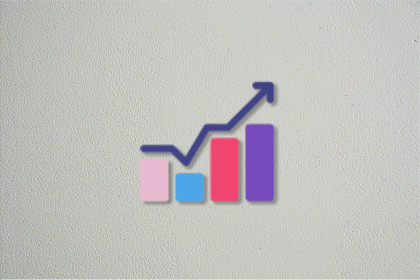A good marketing plan can work wonders for an organization, but it’s no easy feat to create. As a product manager who works with many talented product marketing managers, a good marketing plan aligns the organization and keeps everyone moving in the same direction.

In this post, we’ll cover how to create a compelling marketing plan (while adding some product manager’s spice to the recipe). The research and discovery behind the writing of this blog included a survey to product marketing experts that I work with. Their feedback and advice is sprinkled throughout the article and helped it more pragmatic and action-driven. As you read, you’ll find some very specific hints and tips from these PMMs who are active in B2B SaaS.
Let’s get started.
A marketing plan is a structured guide for a company’s marketing activities across a specific period. It includes market analysis, target demographics, competitive landscape, and a SWOT analysis. The plan outlines clear objectives and strategies across product, pricing, distribution, and promotion, and details action plans, timelines, and key performance indicators for effective implementation and tracking.
Some of the feedback from the PMMs I surveyed highlight some interesting takeaways about what a good marketing plan needs. Common responses included:
There’s no debate that a marketing plan requires a lot of work to craft. There is a lot of research and data to get from various teams to build a compelling plan. The creation is half of the effort, and the actual execution and evaluation require more commitment. According to the survey we conducted specifically for this post, all this effort pays off!
Taking into account the craft work needed and the final plan, measuring and following through on the goals of the marketing plan can drive big value to the company. According to one of the survey answers, a well-crafted marketing plan can fully complement a self-served product funneling the right audience into the product.
Considering a cohesive story and the role of product managers in the proper execution of a marketing plan, we are talking about collaboration and coordination of actions. These habits built during the execution and evaluation of the marketing plan can have a lasting effect on the whole company as they are inherited in the day-to-day team collaboration.
We can now cut to the chase of this post. The components of a good marketing plan include:
Let’s go over them all in detail below.
This holds the outline of the marketing plan and a short introduction of what follows. Use this section to share generic information about the business and the specifics of the marketing plan. The executive summary acts as the introduction to the marketing plan.
This section outlines the company’s business and industry, mission, vision, and any specific marketing branding and styling guidelines to follow. It should act as a compass that the whole marketing plan needs to always keep in mind.
The product overview is there to provide more clarity, direction, and reminders about the backbone of the marketing plan. With a product overview, all teams acting on the marketing plan have a clear view of what they are actually talking about.
This is a sub-section of the product overview to share the specifics of how the product covered in the marketing plan works. Showcase actual screenshots and flows of the product that relate to the marketing plan. It can offer additional clarity to all involved teams working on the marketing plan.
The purpose of the marketing analysis section is to define the target audience, go through any market segmentation, and add a SWOT and competitive analysis to the report. In general, all the data from this section will define the marketing direction of the whole marketing plan.
A key value proposition is the approach that your marketing plan will take and ultimately set you apart from the competition. It is important to be bold and specific in your description of the key value proposition. Add information about the marketing strategic direction and the basic story supporting it, and relate the products to the strategy and story of your marketing plan.
This portion of the marketing plan follows the shared product overview and key value proposition sections. It highlights the specific goals you hope to achieve with the marketing plan. Make sure to specify both the metrics and timeframe of success for a goal.
KPIs exist to establish more fine-grained metrics around achieving the marketing plan goals. These metrics are indicators of moving toward the marketing goals and help in the team’s implementation in building the proper action items.
This is the heart of the marketing plan. Starting from the available budget and key milestones will lead you to the following important subsections within the action plan:
This is where you will measure the impact of your work. In this section, define the tools and events to measure the KPIs and share evaluation standards for each of the metrics.
KPI check-ins are an important part of this section to keep all your KPIs progressing as the marketing plan is put in motion. With this section, all stakeholders should have a clear view of how your defined metrics are evolving along the implementation.
These are the sections of an effective marketing plan. One thing to keep in mind is that you will need to adjust the above sections for your specific use case and needs. There is a chance one or more sections don’t apply to your case and you might need to remove it, but be mindful before you start making cuts to fit your needs. Your marketing plan should tell a consistent story.
Based on the steps above, we created a marketing plan template in Google Docs for you to use as your base. In this template, we included more guidelines and descriptions to assist you in writing a compelling marketing plan.
To download the template, go to File > Make a copy:

The structure detailed above supports a cohesive story. This is very important, as:
The marketing plan components start from the generic story and steadily dive deeper into the specifics needed for the actual implementation. At the end, you’ll do an evaluation of the actions.
The story structure is something you should strive for when building your action plan. Start from the generic storyline for your target audience and move down into the specifics as your marketing plan unfolds over time.
To properly position your marketing plan on your current needs you need to pay attention to the following aspects.
Context and information details are vital in defining the differences of a marketing plan approach. Talking about a specific product or line of products means that you should include information about these products in your marketing plan. That information will help build a cohesive and structured story.
Stay close to your audience either through interviews or following their social presence. This part of the marketing analysis will help you define the proper tone, voice, and approach for your marketing plan actions. Pay close attention to how people talk about the product and its landscape. What is the exact language they use? And how are they reacting to the marketing efforts you’ve been doing thus far?
A value proposition differentiates you from the competition. In the marketing plan, share reasoning and ideally, one or two examples of how this value proposition relates to your specific products and audience.
As I’ve mentioned, I talked to a number of product marketing professionals and gathered their biggest tips for creating a marketing plan. Here’s what they said:
In this post, we touched upon many aspects of crafting a compelling marketing plan. We shared some insights from product marketing experts in the field and shared some tips to further assist you in creating a compelling marketing plan.
Crafting a compelling marketing plan has a lot of moving parts and needs a big effort. Still, making the decision to create the marketing plan and act on it is a very deliberate decision that requires commitment for the execution too.
Based on the scale of the marketing plan and the feedback from product marketers, the implementation of a properly crafted marketing plan can have a big impact on the company and products involved, so it’s an effort worth investing in.
I want to close this article with the following. In the survey question, “IRL: Is it worth the investment to build a marketing plan?” one of the answers was “Big yes!” 🙂
Featured image source: IconScout

LogRocket identifies friction points in the user experience so you can make informed decisions about product and design changes that must happen to hit your goals.
With LogRocket, you can understand the scope of the issues affecting your product and prioritize the changes that need to be made. LogRocket simplifies workflows by allowing Engineering, Product, UX, and Design teams to work from the same data as you, eliminating any confusion about what needs to be done.
Get your teams on the same page — try LogRocket today.

Turn your SaaS product into a platform by spotting key signals, avoiding common traps, and building for scale, reuse, and integration.

Learn why the shift from three-in-a-box to full-stack product leads is redefining product roles, collaboration, and career growth.

Learn how product-led cost management improves margins, maintains velocity, and creates user value through a repeatable playbook.

Learn strategies to avoid becoming a bottleneck as a PM by fostering autonomy, reducing approvals, and empowering your team to decide.